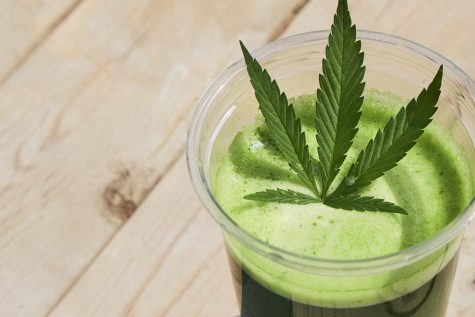Raphael Mechoulam plans new revolution almost 60 years after isolating THC and CBD
Back in 1963, Professor Raphael Mechoulam made cannabis science history when he managed to isolate and synthesize numerous cannabinoids, including the psychoactive compound THC (tetrahydrocannabinol)l and the non-psychoactive cannabinoid CBD (cannabidiol), among many others.
Some years later, in 1998, Mechoulam discovered the body’s intricate endocannabinoid system (ECS), which is responsible for maintaining the balance of a variety of biological processes. Composed of cannabinoid receptors, the ECS works seamlessly with cannabis-derived cannabinoids to trigger a wide range of effects.
Now, Mechoulam – who has been nicknamed the “godfather” and “father” of cannabis research – and the team that he leads at EPM have discovered molecules in a lab that allow for cannabinoid acids to be easily reproduced.
What is EPM and what does the team’s research on cannabis-derived acids entail?
Startup cannabis-pharmaceutical company EPM aims to bridge a gap between the two industries. The company’s medical team is led by Mechoulam, who works alongside EPM’s CEO, Israeli entrepreneur Reshef Swisa, and British businessman veteran Julian Gangolli, who assumes the role of EPM’s chairman.
Swiss says that the more he and his team at EPM investigate, the more they understand that cannabis acids offer an effective alternative to two of the most debilitating diseases endured in today’s modern world.
“When you look at a cannabis field, none of the plants actually contain THC or CBD or any cannabinoids. All cannabinoids will appear on a plant only after that plant is dead,” Swisa said during a recent interview with reporters from the Jerusalem Post. “You learn that there is a big difference between the compound you find on a plant when it’s alive and the compound you’ll find when it’s dead.”
Cannabis-derived acids are not easily reproducible
Swisa believes that cannabis acids offer an exciting area for fresh research because, instead of focusing on compounds that decarboxylate from the plant once it enters the drying phase, the EPM team see pride in understanding what happens on the actual plant.
“The cannabis acids are very unstable, meaning they break apart into cannabinoids very easily. If you tried to take them from the plant or tried to consume them, the heat of your body would break them down and they would decarboxylate,” said the company CEO in regards to why his team are choosing to replicate cannabinoid acids, as opposed to simply using highly potent naturally-occurring cannabis acids.
Sidestepping these issues, Swisa says, was made possible when Mechoulam’s hardworking team started synthesizing molecules in a lab. The synthesizing process led to the structures of cannabis acids being reproduced. Since the cannabis acids do not separate into cannabinoids without some level of difficulty, replicating them to a sizable extent is made possible without dependency on living cannabis plants.
“We’ve so far developed 14 different molecules, eight of which are completely novel discoveries, meaning that we own a very exclusive patent on them, since they are a new discovery to the scientific world,” explained Swisa. “Each one of those molecules has the potential to be developed into several drugs, while many companies can do incredible things with even just one molecule.”
Swisa concluded the interview by saying that cannabis acid models could treat a wide range of illnesses, including anxiety, depression, atopic dermatitis, psoriasis, nausea, lung inflammations and various skin conditions.
“We have research institutes working with us in Israel, Canada and the UK. We have facilities developing EPM products in the UK, Sweden and Denmark, and offices in the US and Australia. I can estimate that more than 200 people in different universities and CRO’s [contract research organizations] are working on our projects at any given time.”










